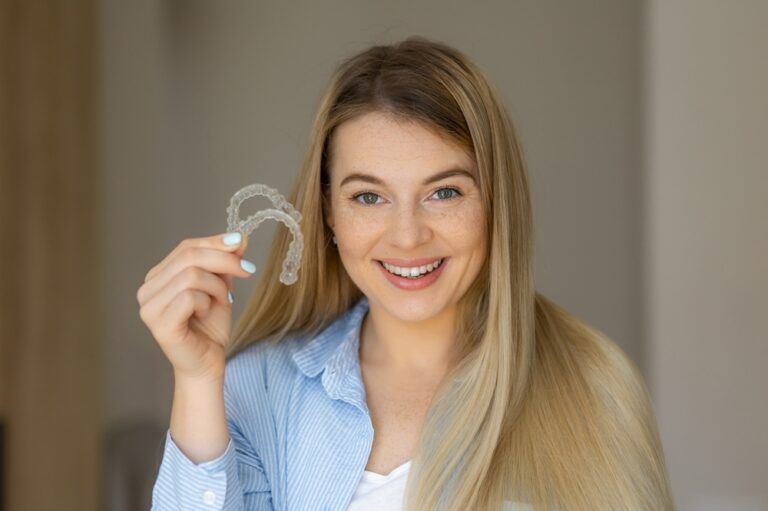Straightening Teeth Without Braces: Alternatives and Considerations

For many people in Glendale, CA, the idea of achieving a straighter smile without traditional braces is highly appealing. Advances in orthodontic technology have made it possible to correct mild to moderate misalignments through alternative treatments. While braces remain the gold standard for complex cases, there are several other methods available for those seeking a more discreet or convenient path to straighter teeth. Understanding these options, their benefits, and their limitations is essential before making an informed decision about your orthodontic care.
Why Patients Seek Alternatives to Braces
Traditional braces are highly effective, but they may not be the preferred choice for everyone. Adults often want a solution that is less visible in professional and social settings, while teenagers may be looking for a less restrictive treatment experience. Comfort, convenience, and shorter treatment times are other reasons people explore alternatives. In some cases, individuals may also have only minor alignment issues that do not require the intensity of braces.
These preferences have driven the development of innovative treatments that balance functionality with aesthetics. However, it’s important to understand that these alternatives may not be suitable for every case. Consulting with an orthodontic professional helps determine the best path based on the unique needs of each patient.
Popular Alternatives to Traditional Braces
Advancements in orthodontics have introduced a range of options for teeth straightening. These alternatives vary in terms of visibility, cost, and effectiveness. Some of the most popular choices include:
- Clear aligners: Removable, custom trays that gradually shift teeth into alignment.
- Lingual braces: Braces placed on the back of the teeth, making them invisible from the front.
- Ceramic braces: Tooth-colored brackets that are less noticeable than metal braces.
- Veneers: Cosmetic coverings that improve the appearance of slightly misaligned teeth without moving them.
Each method serves a different purpose and is best suited for specific types of alignment problems. Choosing the right one depends on the severity of the case, treatment goals, and lifestyle preferences.
Clear Aligners: A Discreet and Convenient Option
Clear aligners have quickly become one of the most sought-after alternatives to traditional braces. These transparent trays are custom-made and replaced every few weeks to gradually move teeth into their desired positions. Because they are removable, they offer unmatched convenience for eating, brushing, and flossing.
However, clear aligners require a high level of discipline. For optimal results, they must be worn for 20 to 22 hours per day. They are most effective for mild to moderate alignment issues, such as small gaps, minor crowding, or slightly rotated teeth. Patients with more complex orthodontic needs may not achieve full correction with aligners alone.
Lingual Braces: Hidden but Effective
Lingual braces provide the effectiveness of traditional braces while remaining completely hidden from view, as they are bonded to the back of the teeth. They are ideal for those who want the power of braces without the visible metal brackets.
Despite their discreet appearance, lingual braces can take some time to get used to, particularly when it comes to speech and tongue placement. They may also require slightly longer treatment times, and regular maintenance is essential to avoid irritation or difficulty cleaning.
Ceramic Braces: A Less Noticeable Alternative
Ceramic braces function much like traditional metal braces but are designed with clear or tooth-colored brackets that blend with the natural color of teeth. They offer a balance between durability and aesthetics, making them an attractive option for those who want effective results with a less prominent look.
While ceramic braces are less visible, they can be more fragile than metal braces and may stain without proper care. They are often recommended for patients who prefer a compromise between traditional treatment strength and modern aesthetics.
Cosmetic Solutions for Minor Alignment Issues
For individuals with very minor alignment concerns, cosmetic options such as veneers or bonding can improve the appearance of the smile without physically moving the teeth. Veneers, for example, are thin shells that are bonded to the front surface of teeth to mask imperfections such as gaps, slight misalignments, or discoloration.
These solutions are primarily aesthetic and do not address functional bite issues. They are ideal for those looking for a quick, non-invasive way to enhance their smile, but they are not substitutes for comprehensive orthodontic care when functional corrections are necessary.
Factors to Consider Before Choosing an Alternative
When exploring options for straightening teeth without braces, there are several important factors to consider. These include the complexity of your alignment issues, your commitment to wearing appliances like aligners as directed, and your budget.
Additionally, lifestyle preferences play a major role. Those who want the flexibility to remove their orthodontic appliance for meals may prefer clear aligners, while those seeking the most comprehensive results may lean toward lingual or ceramic braces. Consulting with a qualified orthodontist ensures that the treatment plan is tailored to your specific needs and goals.
Long-Term Results and Maintenance
No matter which method is chosen, achieving a straighter smile requires ongoing maintenance. After active treatment, retainers are typically needed to hold the teeth in their new positions and prevent shifting. Failing to wear a retainer as recommended can result in a relapse, undoing much of the progress achieved during treatment.
Regular dental checkups, good oral hygiene, and adherence to aftercare instructions are critical for maintaining the results of any orthodontic treatment. A proactive approach ensures that your investment in a straighter smile lasts for years to come.
Closing Thoughts
Understanding the range of alternatives to traditional braces empowers individuals in Glendale, CA, to make informed choices about their orthodontic care. Whether you’re considering clear aligners, lingual braces, ceramic braces, or cosmetic treatments, each option comes with its unique benefits and limitations. At Massih Orthodontics, patients are encouraged to educate themselves on these approaches to find a solution that aligns with both their dental needs and lifestyle preferences.
References
Proffit, W. R., Fields, H. W., & Larson, B. E. (2018). Contemporary Orthodontics. Mosby.
Melsen, B., & Verna, C. (2000). Functional occlusion: Theory and practice. Angle Orthodontist.
Kesling, H. D. (1945). The philosophy of tooth positioning appliance. American Journal of Orthodontics.

Recent Comments